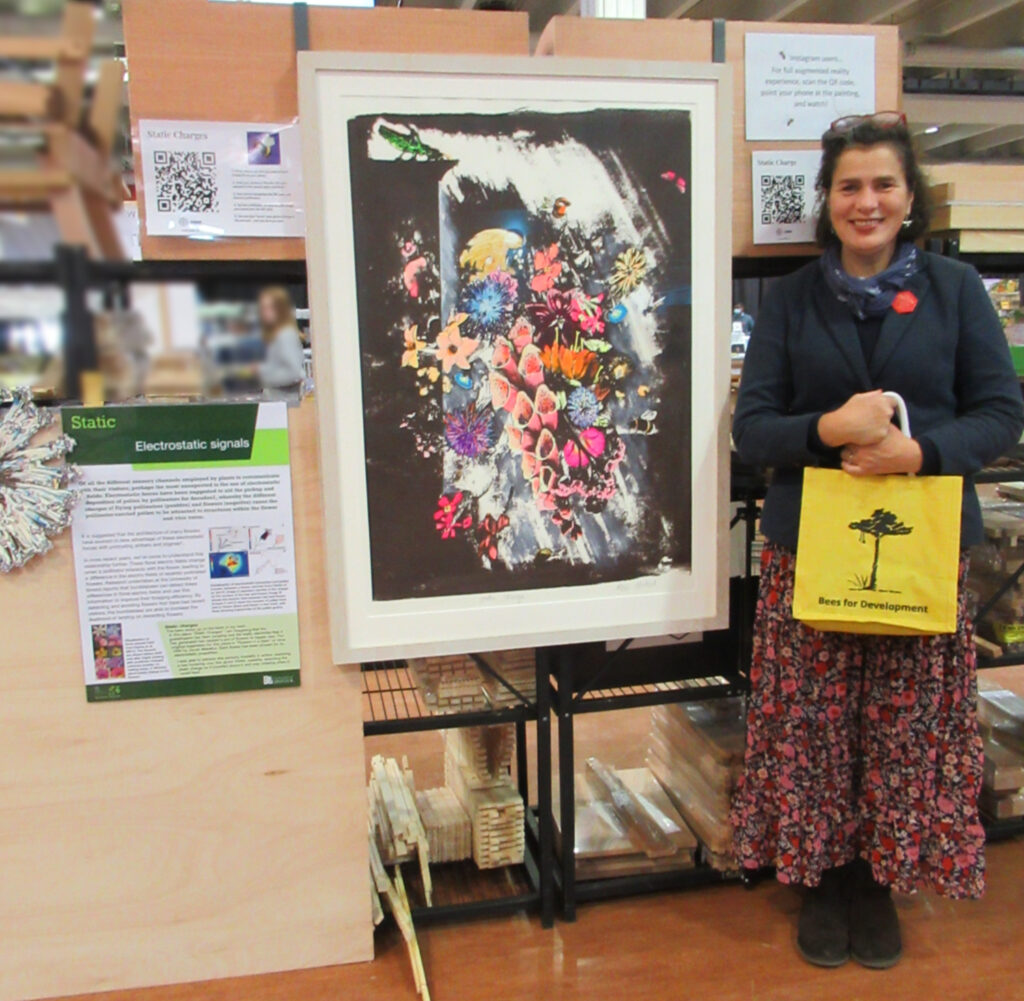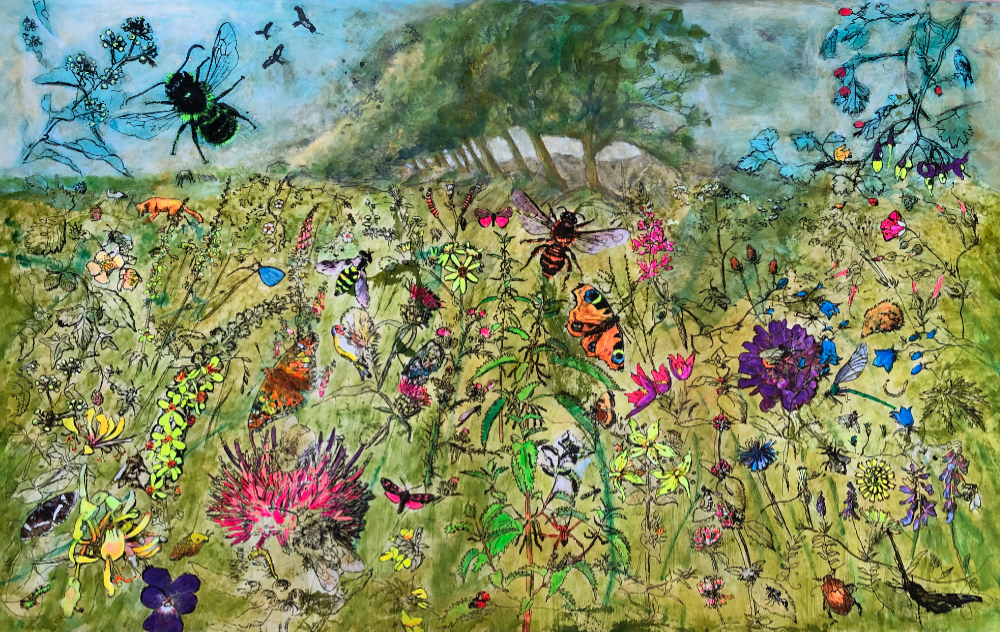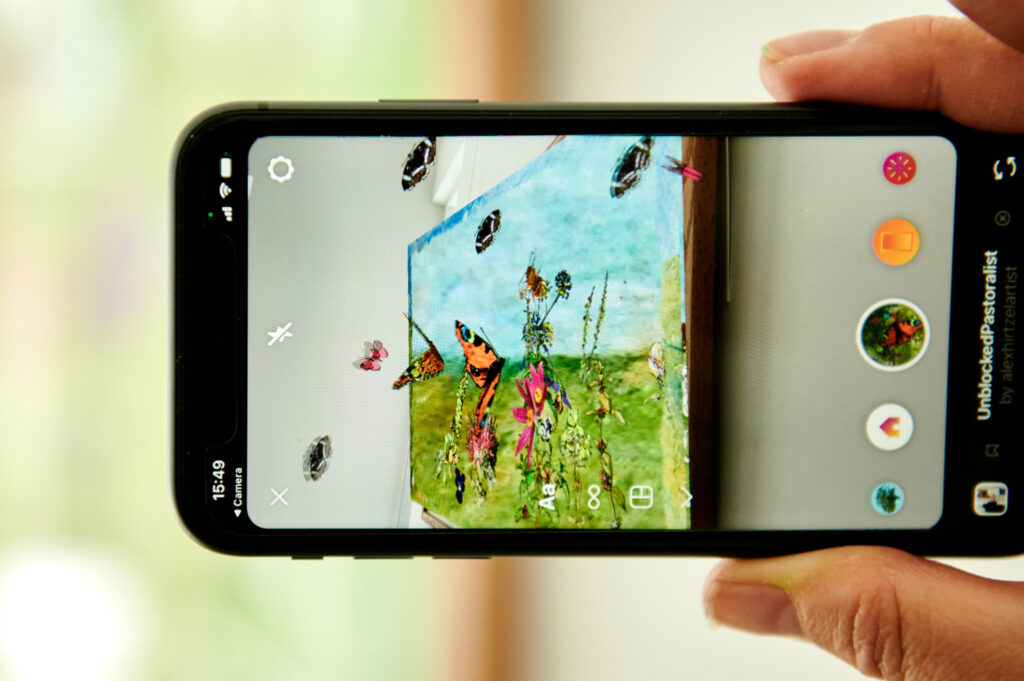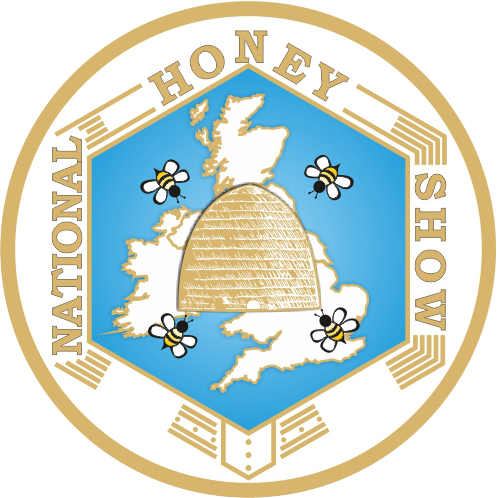
Shown here at The National Honey Show in 2022, this year Alex Hirtzel will be staging a full exhibition of her fascinating work in the Champagne bar, and giving a talk on the ideas, science and practical aspects on the Friday morning of the show.
Alex’s creative practice has always focused on linking between science and art. In recent years her printmaking and paintings have explored the interaction of pollinators and flowers.
Her latest work centres on the relationship between plants and insects and the hidden messages plants display to bees and other pollinators that humans are unable to see. Her work reflects current academic research about multi-sensory flower-pollinator interactions.

Since autumn 2019 Alex has been working with Dr David Lawson at the Plant Science department of Bristol University, whose research uncovers how foraging pollinators respond to floral displays and their sensory components – including scent, visual markings, iridescence, touch, electrostatic charge & temperature. This has revealed how flowering plants act like advertising billboards to attract insects into them so that the flower can reproduce – and the insects receive pollen and nectar in return. Current ground-breaking research is shedding a huge amount of light in this area, as well as being highly relevant from a biodiversity and conservation perspective. Alex has also collaborated with Dr Beverly Glover and her team at the Cambridge University Botanic Garden. In the summer of 2021 she had a solo exhibition at the University of Bristol Botanic Gardens.

Alex’s latest work centres on the relationship of plants and insects and the hidden messages plants display to bees and other pollinators that humans are unable to see. Her work reflects current academic research about multi-sensory flower-pollinator interactions.
She uses multiple printmaking techniques, as well as painting, ceramics and other 2-D and 3-D media – including AR augmented reality filtered through Instagram.
You will be able to experience the 3D effects (shown left) at the show using the latest version of Instagram on your phone.
She also uses ‘smart’ materials – such as UV, thermochromic and iridescent paints – to create interactive work that reflects how bees see in a way that is visually stimulating and tells of the science. All the 2-D artworks are painted onto prints in very limited numbers.
Alex wants the viewer to be playfully interactive: with a UV torch in the dark the work gives a very different experience – and she has been working with Chris Price at Zubr in Bristol (https://zubr.co/) to add AR as a further medium to enhance the scientific storytelling and playful interaction.
Visit the show to experience these amazing revelations brought to life in Alex’s art.
24 to 26 October 2024 at Sandown Park Racecourse, Esher, Surrey, UK
